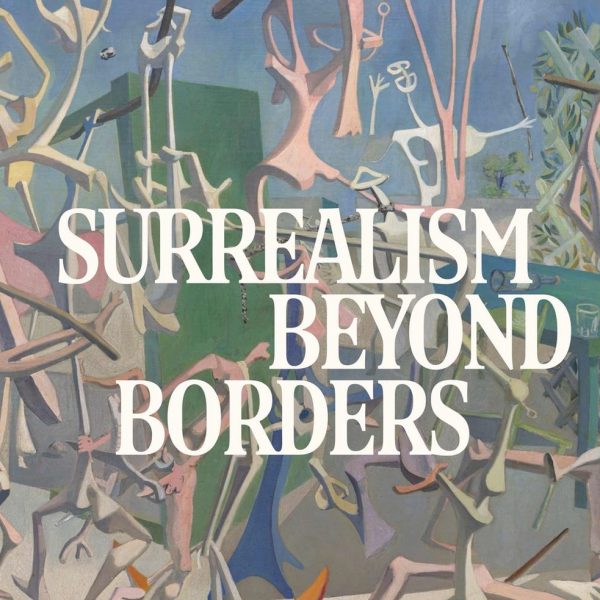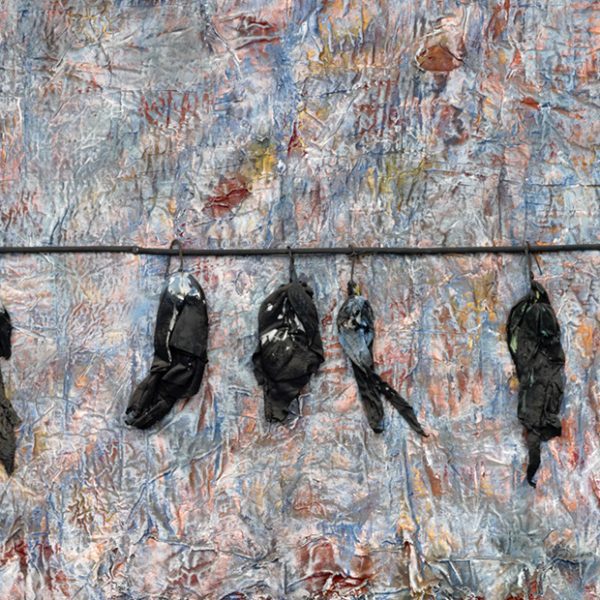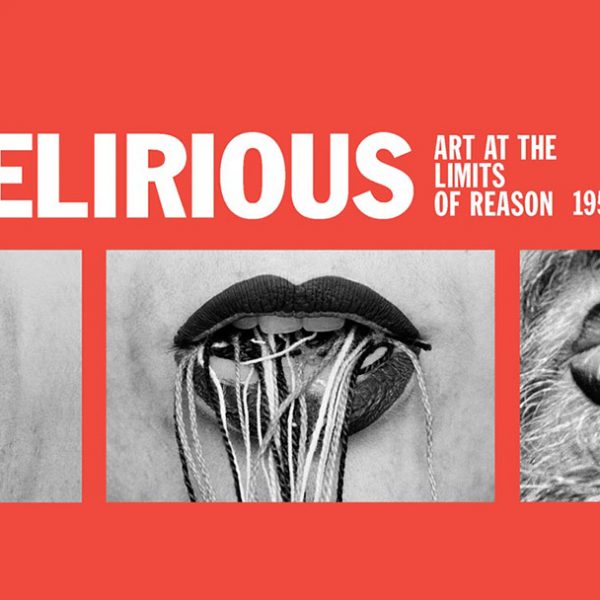Interview with Eric Kjellgren, Author of How to Read Oceanic Art
With thanks to our friends at the Metropolitan Museum of Art, we’re very pleased to post today an interview between Eric Kjellgren, Evelyn A. J. Hall and John A. Friede Associate Curator for Oceanic Art in the Department of the Arts of Africa, Oceania, and the Americas, and Rachel High, Editorial Assistant in the Editorial Department at the Museum. Eric is the author of the new and illuminating publication, How to Read Oceanic Art.
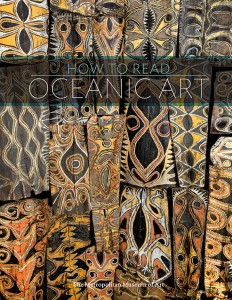 How to Read Oceanic Art by Eric Kjellgren features 200 full-color illustrations and is available at the Met Store and MetPublications.
How to Read Oceanic Art by Eric Kjellgren features 200 full-color illustrations and is available at the Met Store and MetPublications.
With the start of a new school year, it is a great time to learn about the art and cultures of Oceania, with the help of this fascinating new publication, written specifically to provide the keys to understanding the significance and meaning of Oceanic art. How to Read Oceanic Art is a clear and detailed introduction to Oceanic art through the Met’s comprehensive collection. I was able to speak with the author, Eric Kjellgren, formerly the Evelyn A. J. Hall and John A. Friede Associate Curator for Oceanic Art in the Department of the Arts of Africa, Oceania, and the Americas, about this engaging introduction to Oceanic Art and his interest in the artistic traditions of the Pacific Islands.
Rachel High: Could you speak a little bit about the publication and the How to Read series in general?
Eric Kjellgren: How to Read Oceanic Art is the third in the Museum’s How to Read series which aims to provide introductions to a broad spectrum of the diverse art traditions within the Met’s collection. While the previous two volumes How to Read Chinese Painting and How to Read Greek Vases each focused on an individual art tradition within a single culture, the goal of How to Read Oceanic Art is to introduce readers to an entire region of the world. Oceania is by far the largest geographic region that the Museum covers. It actually covers about a third of the surface of the Earth. It is an immensely diverse region; there are about 1800 different cultures and hundreds of separate art traditions.
Rather than being an encyclopedic account, I view the book as an anthology of readings that will introduce the reader both to the diversity of Oceanic art and also to some of the broad concepts that underlie the art of many different traditions in different parts of the Pacific. One of the only generalizations that you can make about Oceanic art is that it is impossible to generalize.
The text looks at works from all five of the major regions of the Pacific. The imagery of Oceanic art is very culture-specific. Knowing the meaning of a specific image in one culture does not tell you what it means in another. This is one of the points that Istress in the book, and I show in many of the entries just how those meanings differ. The goal is to interest people in the diversity of Oceanic art and identify some of the common themes that unite it.
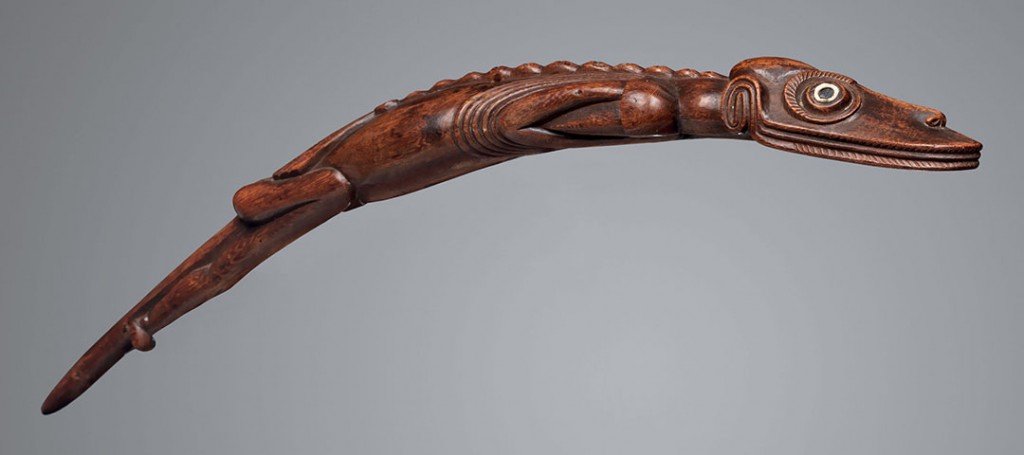
Combining features of humans, lizards, and birds, this hybrid figure is thought to have a protective function and illustrates just one of the many artistic traditions in Oceania. Lizardman Figure (Moko) 19th century Rapa Nui (Easter Island), Rapa Nui people. Wood, obsidian, bone. W. 2 5/16 x L. 19 1/4 in. (5.8 x 48.9 cm). Rogers Fund, 1995 1995.416
Rachel High: What originally drew you to this subject matter and why did you decide it was important to write this book on Oceanic Art?
Eric Kjellgren: I was originally drawn to Oceanic art through two things. The first was reading Typee: A Peep at Polynesian Life by Herman Melville, the author of Moby Dick. He wrote this book ostensibly as a non-fictional account of time he spent in the Marquesas Islands which are a group of islands near Tahiti. Through reading that book I became interested in the Pacific. I had heard of Australia, Hawai’i and New Zealand but almost no other places in the Pacific, so that book sparked my interest. One of the first museum displays of Oceanic art I saw was actually the display right here at the Metropolitan. I had had an interest in non-western art ever since I was a child. I was first interested in Native American Art, so my interest in the Pacific was really a broadening of my earlier interest in the diversity of human cultures and even though I am a specialist in Oceanic art I still find art traditions from many parts of the world fascinating.

A headdress from the Marquesas Islands. Headdress (Uhikana). Late 19th century, Marquesas Islands, Marquesan (Enata) people. Pearl shell, turtle shell, fiber W. 6 x D. 18 in. (15.2 x 45.7 cm). The Michael C. Rockefeller Memorial Collection, Purchase, Nelson A. Rockefeller Gift, 1964 1978.412.832
Rachel High: What is your favorite piece or the piece that you find the most interesting that is included in the book and the collection and why?
Eric Kjellgren: One of my favorite pieces is a turtleshell mask from the Torres Strait Islands, which are located between Australia and New Guinea. The mask is made of plates of the translucent, outer scales from the shell of a sea turtle. These objects are remarkable because of the way in which they were constructed. The artists would take the turtle shell plates, steam them to soften them and then bend them into the desired shape. Then they would drill holes all around the edges. In a process similar to sewing, they joined pieces of shell together with lengths of fiber to create a mask that was truly three dimensional. The main work that illustrates these masks in the book combines the forms a human and a frigate bird, a large majestic seabird found in many parts of the Pacific. The shell has a beautiful, translucent quality and I find the imagery of these masks very compelling.
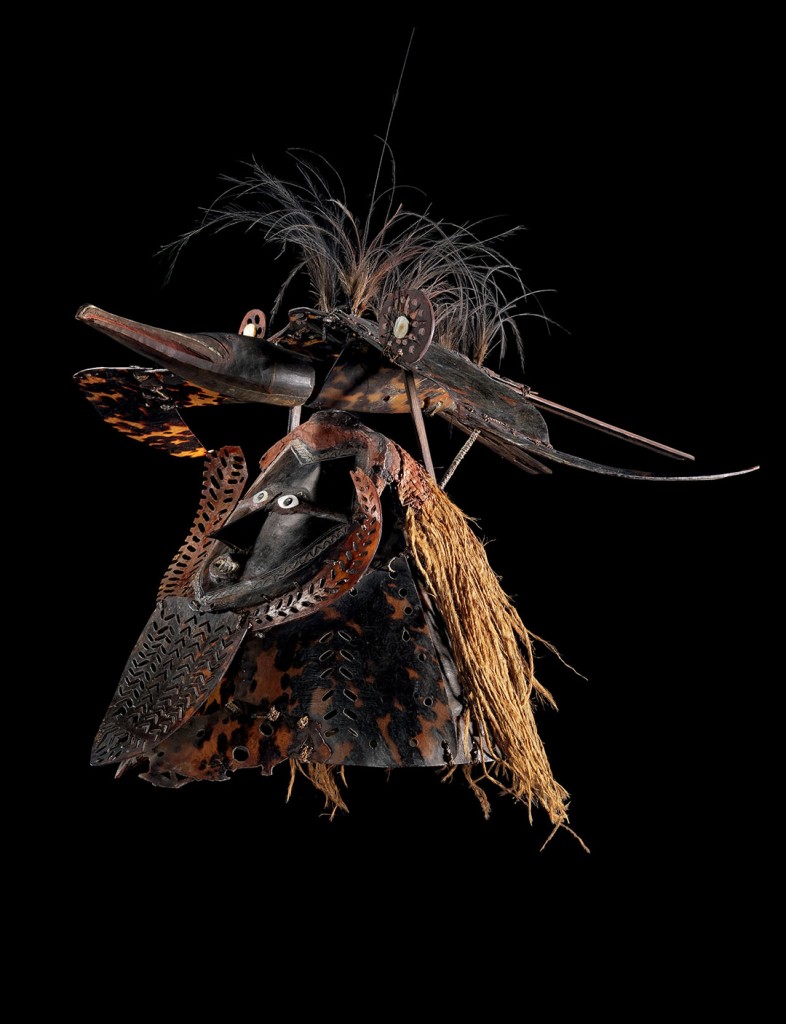
This mask made from turtle shell depicts a human-like face surmounted by the figure of a frigate bird. Mask (Buk, Krar, or Kara). Mid-to-late 19th century, Australia, Mabuiag Island, Queensland, Torres Strait, Torres Strait Islander, Turtle shell, wood, cassowary feathers, fiber, resin, shell, paint. H. 21 1/2 x W. 25 x D. 22 3/4 in. (54.6 x 63.5 x 57.8 cm). Costumes. The Michael C. Rockefeller Memorial Collection, Purchase, Nelson A. Rockefeller Gift, 1967. 1978.412.1510
Rachel High: How do you think students will benefit from this book?
Eric Kjellgren: I think the book would be useful for students as an introductory text to Oceanic art. The general introduction gives a brief overview of the major regions of the Pacific as well as the broad themes that appear in the arts of many Oceanic peoples, and the six chapters that follow explore the arts of each of these regions or subregions in greater detail. This book aims to provide a broad overview of Oceanic art through the museum’s collection, which emphasizes both the great diversity of art traditions in the Pacific as well as some of the grand themes that unify them.
Rachel High: What advice would you give to someone interested in studying Oceanic Art?
Eric Kjellgren: The advice I would give would be to read as widely as possible and to see as many objects from as many different parts of the Pacific as you can. Written references including this one are very important, but it is also invaluable to see the objects firsthand, whether it is in a museum, gallery, or the Pacific itself, where many of the traditions described in the book continue. People often ask me how I can look at an object from the Pacific and tell where it is from just by looking at it, and part of the reason is simply because I have seen so many objects from so many different parts of the Pacific. Giving yourself a visual education whether through print, the internet, or seeing objects in museums or their original settings is essential if you’re interested in Oceanic art. And I hope, in part, that this book will encourage people to come and see some of these beautiful artworks in person at The Metropolitan Museum of Art.
Check out other fascinating posts on Met Blogs.























